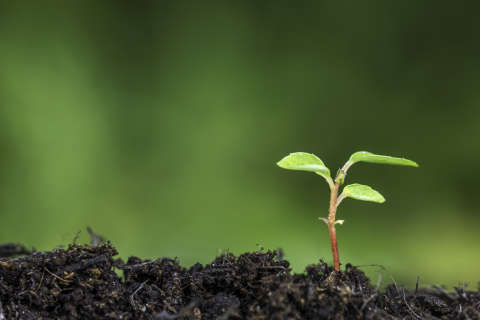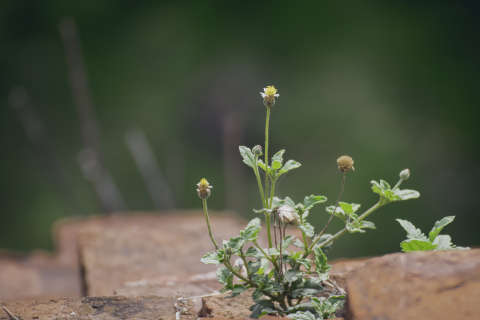Meet Mike!
WTOP Garden Editor Mike McGrath will be at the Fredericksburg Spring Home Show on March 18 and 19. See his full schedule.
Peas for St. Pat’s
The fact that March 17 comes on a Friday this year is a boon for bars — or maybe it’s a bigger boon for employers who won’t have to watch half of their Monday-Friday workers cling to the edge of their desks the next day.
For the real Irish, it’s often a time to stay home and let the amateurs have the pubs for a night. And for gardeners, it’s the supposed “lucky day” to plant their peas. But pea planting on St. Pat’s often means a different kind of luck, as the odds are close to 100 percent that it will be much too cold to sprout any seeds.
Peas have the “shortest window” of any plant
How did St. Patrick’s Day become the “lucky day” for gardeners to pant their peas? Simple math. Peas are the ultimate “short-window,” cold-weather-loving spring crop, flourishing in the weather of an average June but withering to a crisp by the Fourth of July.
That means timing is everything.
Let’s use the popular and quick-to-produce, “edible podded” variety Super Snap as an example: It has a “days to maturity” rating of a little over two months, which means that you need all of April and May for growing time before you get your first peas to pick in early June. And those plants are only going to produce reliably in June, so getting the sprouts up in March could give you an extra 10 days or so of picking time.
But again, the odds are strong that the seeds won’t sprout in the cold soil of March.
That’s why savvy gardeners cheat. And remembers kids: Cheaters always win.
The ultimate pea cheat
Growing your own fresh peas is a difficult task to master. Whether you grow the kinds of peas that you eat, pod and all (such as snow peas and snap peas), or the “English” types you “shell” out of their pods to get to the individual little sweeties inside, they’re going to take 60 to 75 days to produce their first tasty treats — and that’s from germination of the plants, not from the day you plant the seeds, especially if the soil is cold.
But again, heat-sensitive pea vines burn up quickly after June is over, making this timing intensely tricky. That’s why I always “cheat” by pre-sprouting my pea seeds indoors and then planting the sprouts (or young plants) outside. (And yes, often on St. Pat’s.)
The seeds won’t sprout in cold soil, but the plants don’t mind low temps one bit. They’ll even survive a little dusting of white precipitation. (Why do you think they call those tastiest little ones “snow peas”?)
Pre-sprouting 101
Want to make sure you get some tasty eating from your snow, snap or English shelling peas before summer heat burns up the vines? Pre-sprout the seeds indoors. There are two easy ways:
Pea sprouting Ph.D.
Pick the area you intend to “pea plant” and cover it with clear plastic (1-2mm thick is ideal) about a week in advance to warm the soil. Hold the edges down with some bricks or pavers. Remove the plastic right before planting and don’t put it back.
Oh, and be sure to provide sturdy support for full-size vines: Some of the best English shelling peas reach 8-feet-tall. (But they’re self-supporting if you provide the right kind of trellis for them to cling to.)
If you’re tight on space or container gardening, grow compact “bush-style” varieties instead — they tend to top out at around two or three feet tall and still need some support, but just a little bit of support. (Despite the “bush” designation, they’re still vines.)
It’s opening day in Philly
The loud noise you heard this morning was not most of Foggy Bottom waking up with a Sainted hangover. It was the thunderous hoards descending on the City of Brotherly Love for the first day of this year’s Philadelphia Flower Show.
The oldest and largest indoor flower show in the world runs March 11-19 and this season celebrates Holland, both for its horticulture and emphasis on sustainability. This will be the first appearance of Holland’s famed “bio-dome” outside of the Netherlands. (And weren’t windmills the original renewable energy source?)
I have lectured at the Philly Show since 1990 and will also be there this year doing a lively Q&A in the Gardener’s Studio showcase at 4 p.m., Wednesday. That’s 30,000 tulips, a bio-dome and me.
Insider tip: The show is most crowded in the morning, when hundreds of busloads of flower-lovers arrive from all over the Northeast. It begins to thin out around 3 p.m. and by 5 p.m., you can walk right up to even the most popular exhibits. So show up in the early afternoon, look around a bit, get your hand stamped for free re-entry, go out and get a bite to eat in the famous Reading Terminal Market across the street (or the nearby Panera, Hard Rock Café or Magianno’s. Or at any one of the dozens of great restaurants in Chinatown — which is just a block or so to the east and north) then come back and really see everything up close. The show is open until 9 p.m.
Online tickets are much less expensive than at the door and you won’t have to wait in line.
Mike McGrath was Editor-in-Chief of ORGANIC GARDENING magazine from 1990 through 1997. He has been the host of the nationally syndicated Public Radio show “You Bet Your Garden” since 1998 and Garden Editor for WTOP since 1999. Send him your garden or pest control questions at MikeMcG@PTD.net.







